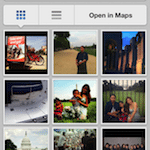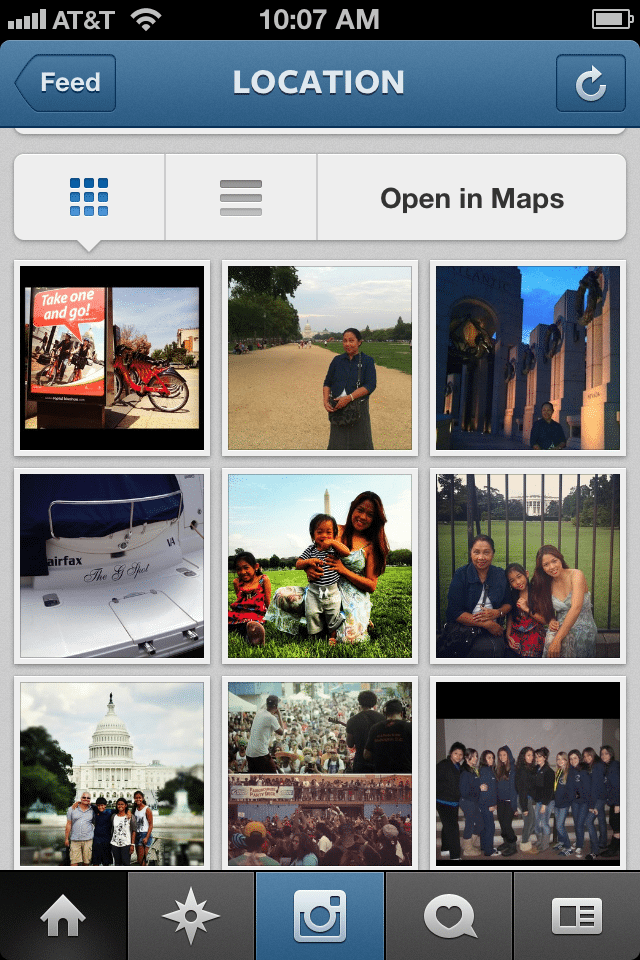Instagram finds a place for travel in new Photo Maps

Skift Take
Instagram 3.0 for iPhone and Android introduces Photo Maps, a feature that signals subtle, but important changes for the photo-sharing service.
With Photo Maps, users choose geotagged images they've uploaded to appear on their Photo Map. In this way, people who are following them can browse those pics from Chamonix taken last Spring, for example, and users can also peruse other users' Photo Maps, as well.
Only a relatively small percentage of Instagram's pics currently are geo-tagged, but it looks like this will be emphasized in the future.

It's ironic that with Photo Maps, the central feature of the iPhone and Android update, Instagram becomes a little less like Facebook in terms of sharing photos and narratives in a chronological feed, and tilts more toward geotagging and emphasizing place.
While UK authorities have cleared Facebook's $1 billion acquisition of Instagram, in the U.S. the Federal Trade Commission is still mulling the transaction.
Making money in a snap?
In an insightful post, GigaOM's Om Malik points out that the Photo Maps may be evidence of the beginnings of a business model for Instagram, as advertising might be introduced in the form of sponsored photos or sponsored stories based on location.
And, with its tens of millions of users, the Instagram Photo Maps may turn out to be a very significant development for "travel" as propective vacationers would be able to merely select a destination on a map and examine the photos instead of more cumbersome searching for a venue via hashtags.
The problem with this scenario for now, however, is that many people today use Instagram to have fun taking and sharing photos, and not necessarily as a travel app.
"Instagram has become a habit, both for uploading my own photos and checking out others," says avid Instagram user Laura Bly, a travel reporter at USA Today. "But I use the app as entertainment and a source of inspiration for bettering my iPhonegraphy skills, not as a way to choose a destination."
"Will having geotagged photos show up on an individual user's map change that?" Bly asks. "It's a cool feature, but probably not."
Still, with tens of millions of users, there is certainly the potential that a subset could end up using Instagram and its Photo Maps for image-led travel research.
What others have learned
Jason Karas, the CEO of Trover, can cite user-behavior trends with parallels to Instagram.
With about $4.5 million in funds from General Catalyst Partners, Ignition Partners and Benchmark Capital, Trover offers iPhone and Android photo-sharing apps, but subsequent to its launch in 2011, Trover began pitching itself as an entertainment app and not a local directory.
Karas, citing a new release of its apps, claims Trover users view 27 pages per session, up 35% over the previous month.
And, that's a 300% increase compared to last summer, when Seattle-based Trover "was tightly positioned as a local directory service," as the company puts it.
Karas says users create all kinds of lists on the service, even if some of the compilations can seem "irrational."
"People love to organize stuff and it's not always to guide them on their next restaurant choice or trip," Karas says.
Do maps make for an immersive experience?
Unlike Instagram, all the images on Trover are geotagged, although Trover has chosen to emphasize a "spatial browser," where the user views images by proximity, instead of on a map, as Instagram now is doing.
Karas argues that superimposing images on a map makes for "a less immersive experience."
And, the use of Trover as an entertainment app may put it in an advantageous position when compared with social travel apps, which tend not to get used much between trips, Karas argues. "We are engaging people between the times they actually travel," Karas says.
Exciting changes for Instagram
Karas calls the updates at the much larger Instagram "really exciting" because Instagram previously didn't leverage geotagging to the degree it could have.
"It's a natural way for people to consume a place and not through a chronological view," Karas says, referring to the Instagram Photo Maps.
"It's a new type of storytelling, like we do, a geo-based story," Karas says.
Karas agrees that such geo-based storytelling can indeed lead to monetization efforts and travel applicability for both Instagram, and in its own modest way, for Trover.
"We get a strong signal when people are clicking on Maui surfer images and when we are larger, we will monetize matching advertising to these signals for hotels nearby or for activities near that surf beach or town," Karas says.
But, Trover, Karas concedes, has a much bigger problem than Instagram, considering the latter's phenomenal growth.
Trover is focused on building an audience and increasing user engagement, Karas says, adding building a business will come later.
"The easier part is monetization," he says.




